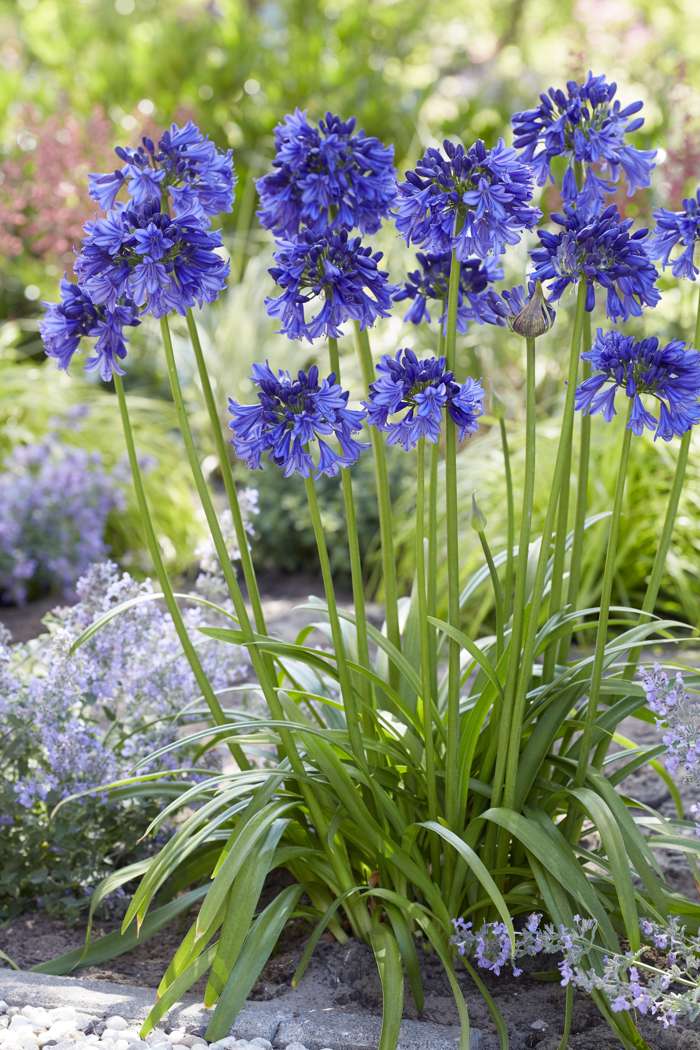How to Plant and Maintain Agapanthus in Your Yard
How to Plant and Maintain Agapanthus in Your Yard
Blog Article
Grasping the Art of Agapanthus Care: Essential Actions for Healthy Development and Vibrant Blooms
In the realm of horticulture, the growing of agapanthus stands as a satisfying venture for those who seek to support these elegant blooming plants. From selecting the best range to mastering trimming strategies, the journey in the direction of growing prospering agapanthus plants is diverse and holds the essential to opening the full potential of these agricultural treasures.

Selecting the Right Agapanthus Selection

When choosing the right Agapanthus range for your garden, take into consideration elements such as climate suitability, bloom shade, and development habit. In addition, think about the environment in your area to make sure the Agapanthus variety you select can prosper in your details conditions. Comprehending the growth habit of various Agapanthus varieties is important for correct positioning within your yard.
Ideal Planting Conditions
Considering the optimal ecological requirements is crucial for effective Agapanthus growing. Agapanthus plants are sensitive to cool temperature levels and must be shielded from frost during wintertime months.
To guarantee healthy and balanced development and vibrant flowers, plant Agapanthus light bulbs at a depth of concerning 2-4 inches and space them 8-12 inches apart. Including natural issue, such as garden compost, to the dirt can improve drainage and fertility, advertising robust root development. Mulching around the base of the plants aids retain wetness and reduces weed growth. Normal watering is essential, especially during the expanding period, to keep the dirt constantly moist yet not soaked.
Watering and Feeding Tips
Keeping proper wetness levels and providing important nutrients are vital elements in the treatment routine for Agapanthus plants. When it comes to watering Agapanthus, it is crucial to strike a balance. These plants like continually moist dirt however are at risk to root rot if overwatered.
Feeding Agapanthus is vital for promoting healthy and balanced growth and respected blooms. Apply a well balanced plant food, such as a 10-10-10 formula, in the early spring as new development arises. Repeat this application every 6-8 weeks throughout the growing period. Avoid excessive fertilization, as it can result in lush foliage at the expense of blooms. Always comply with the supplier's instructions for correct dilution and application methods. By complying look at this site with these watering and fertilizing ideas, you can ensure your Agapanthus plants grow and generate dynamic, resilient blooms.
Trimming Strategies for Agapanthus
Trimming Agapanthus plants at the proper times and with correct techniques is important for maintaining their health and wellness and advertising optimum growth and flowering. The ideal time to trim Agapanthus remains in late winter or very early spring prior to brand-new growth arises. Start by getting rid of any type of dead or yellowing fallen leaves near the base of the plant. Cut them as close to the ground as feasible without harming the arising shoots.
For flowered stems, wait till the blooms have actually withered and after that cut them back to the base. This not only tidies up the plant's appearance but also urges the advancement of new blossom buds. Deadheading spent flowers can also redirect the plant's power into producing even more blooms instead than setting seeds. However, if you wish to collect seeds for propagation, leave some blossoms to mature and completely dry on the plant.
Bear in mind to utilize tidy, sharp tools to make exact cuts and lower the threat of presenting diseases. try this site Agapanthus. Regular pruning will certainly assist keep your Agapanthus looking healthy and cool while ensuring a plentiful display of beautiful blooms
Dealing With Typical Pests and Diseases
After making certain proper trimming techniques for Agapanthus, it is essential to resolve common pests and conditions that can affect the health and vigor of these plants. Agapanthus plants are usually durable however can still succumb to certain concerns. One typical parasite that impacts Agapanthus is the Agapanthus gall midge. This small, orange fly lays its eggs in the foliage, causing altered development and blossom buds that fail to open. To fight this bug, prune and damage any type of afflicted plant components and take into consideration utilizing insecticidal soap.
Additionally, Agapanthus plants can endure from root rot if they are planted in improperly draining soil. By being attentive and taking prompt activity against illness and parasites, Related Site you can help your Agapanthus plants flourish and create dynamic blossoms. Agapanthus.

Conclusion
Finally, grasping the art of agapanthus treatment entails picking the right selection, supplying optimal growing conditions, appropriate watering and fertilizing, appropriate pruning strategies, and dealing with usual bugs and diseases. By following these essential steps, you can make certain healthy growth and dynamic blossoms for your agapanthus plants. Bear in mind to regularly monitor and keep your plants to promote their general health and longevity.
To make sure healthy and balanced development and vivid flowers, plant Agapanthus light bulbs at a depth of about 2-4 inches and area them 8-12 inches apart. By adhering to these watering and feeding pointers, you can guarantee your Agapanthus plants prosper and produce vibrant, resilient flowers.
One typical insect that impacts Agapanthus is the Agapanthus gall midge. Furthermore, Agapanthus plants can experience from root rot if they are planted in improperly draining pipes soil. By complying with these important steps, you can guarantee healthy and balanced development and dynamic flowers for your agapanthus plants.
Report this page